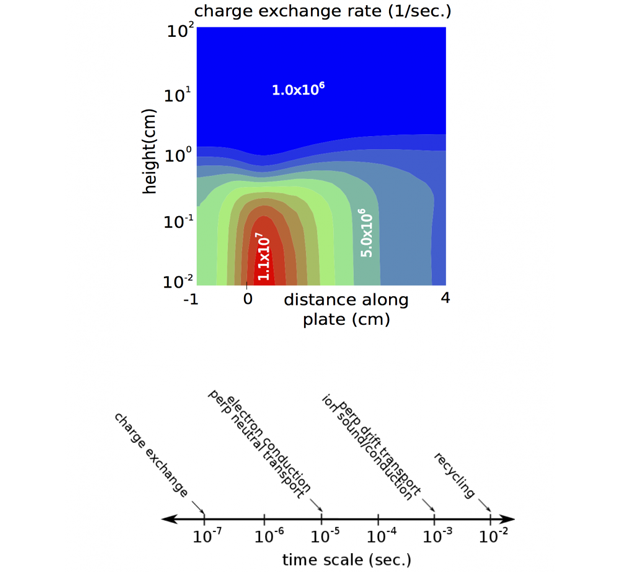Andris Dimits (15-ERD-059)
Abstract
The prediction of magnetic fusion energy plasma performance requires accurate modeling of the edge plasma region, which in turn requires accurate coupled treatment of the neutral (atomic) species and charged species (ions and electrons) that inhabit this region. Lawrence Livermore has a highly efficient, implicitly coupled combination of fluid neutrals and plasma models within its two-dimensional, edge-transport code UEDGE. However, to achieve sufficient physical fidelity for some important situations, these plasma-species models must be coupled to a kinetic neutrals model. Such neutrals models are based on Monte Carlo techniques, which rely on repeated random sampling to compute results. The coupled combination of plasma-species models with kinetic-neutrals models can be very computationally expensive to run. We will develop an efficient scheme for combining kinetic Monte Carlo and fluid plasma computations for magnetic fusion energy edge simulation. To this end we will develop new, optimally performing coupling algorithms; implement these for combining established neutral and plasma codes; and verify, demonstrate efficacy of, and validate the algorithms using existing analyzed data from experiments conducted at ITER, an international magnetic fusion energy experiment in the south of France intended to prove the viability of magnetic fusion as an energy source.
Our primary goal is to overcome the limitations of current magnetic fusion energy edge-transport codes that prevent wide and routine use of coupled kinetic Monte Carlo neutrals and fluid plasma-transport models, as well as prevent the use of such coupled models as a component of a larger, further integrated tokamak fusion reactor model. Satisfying this goal would address a very important need for magnetic fusion energy progress towards its larger goal of achieving controlled thermonuclear fusion as an energy source. Specifically, we expect to deliver (1) highly efficient and usable, self-consistent Monte Carlo and fluid coupling algorithms, suited for large-scale parallel computing; (2) systematic mathematical stability and convergence-rate analyses of numerical methods for a hierarchy of model problems that capture key aspects of the coupling problem; (3) implementation of the algorithms in coupling a Monte Carlo neutrals code with a fluid plasma code; (4) verification against codes coupled with existing algorithms; and (5) validation against data from relevant experiments.
Mission Relevance
This project directly contributes to LLNL's high-energy-density and high-performance computing, simulation, and data science core competencies by developing expertise in mission-relevant, multiple-timescale, and multiphysics fusion plasma simulations. Our research will enable a solid foundation for improvement of computationally intensive, kinetic-continuum coupling algorithms for mission-critical national security areas such as high-speed rotating gaseous flows, radiation and neutron transport, and spacecraft reentry.
FY15 Accomplishments and Results
In FY15 we (1) established controllable test edge-plasma transport problems for magnetic fusion energy, and compared solutions and run times for coupling plasma explicitly to Monte Carlo neutrals versus implicitly to fluid neutrals; (2) identified issues that are key to successful coupling of a neutrals and fluid plasma code; (3) tested functional iteration and relaxation schemes, and formulated implementations of quasi-Newton-related schemes; (4) implemented and tested rank-1 Broyden schemes (nonlinear numerical optimization methods) for plasma and fluid neutrals; (5) developed a test bed, and obtained valuable results on effects of randomness, particle discreteness, and low-order mappings on coupling performance; (6) extended and documented relevance of the model in our test bed code to other transport problems; and (7) implemented and tested the Jacobian-Free Newton–Krylov framework for coupling to Monte Carlo neutrals.
Publications and Presentations
- Dimits, A. M., et al., Progress on implicit coupling of fluid-plasma and Monte-Carlo neutral models for edge plasma simulation. Sherwood Fusion Theory Conf., New York, NY, Mar. 16–18, 2015. LLNL-POST-668624.
- Joseph, I., et al., Efficient coupling of fluid plasma and kinetic neutral transport models. 2015 US/EU Transport Task Force Workshop, Salem, MA, Apr. 28–May 1, 2015. LLNL-POST-669959.






